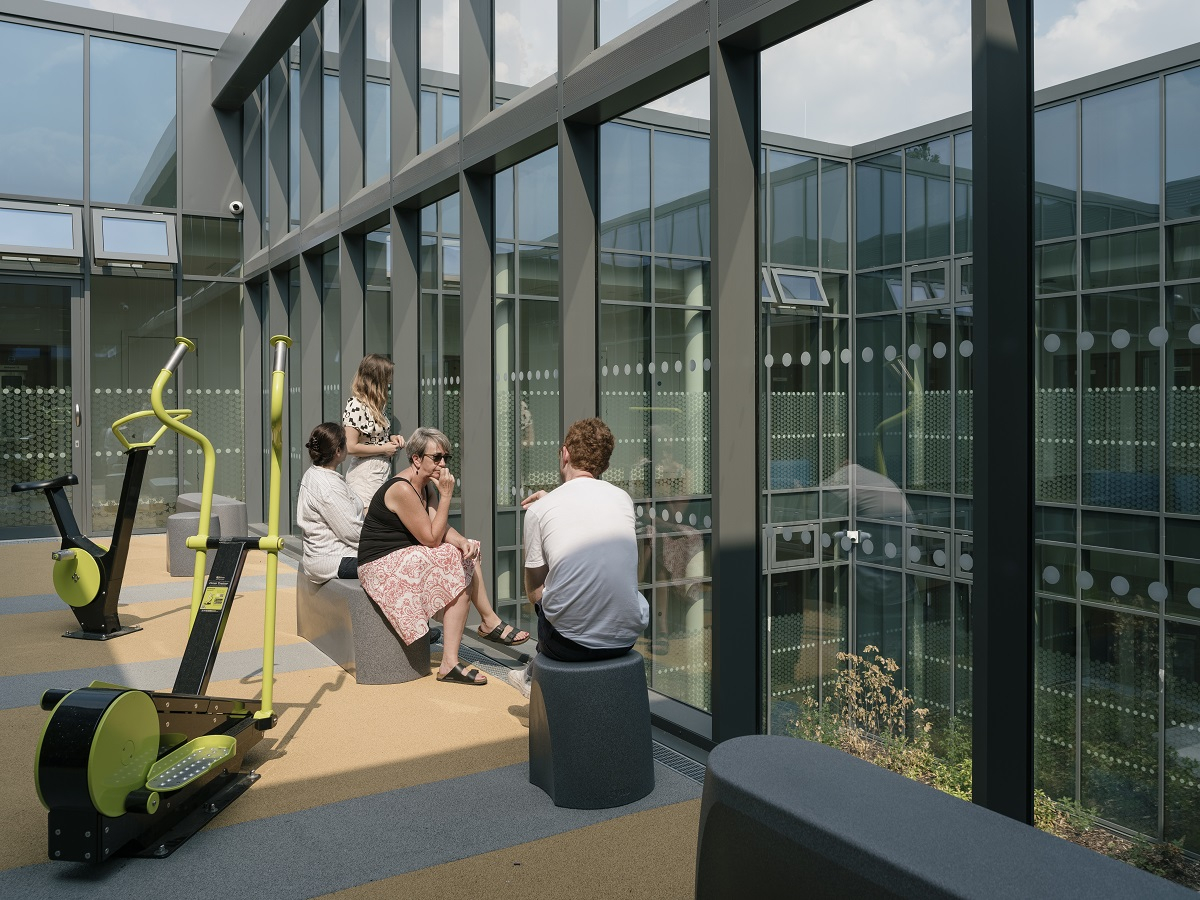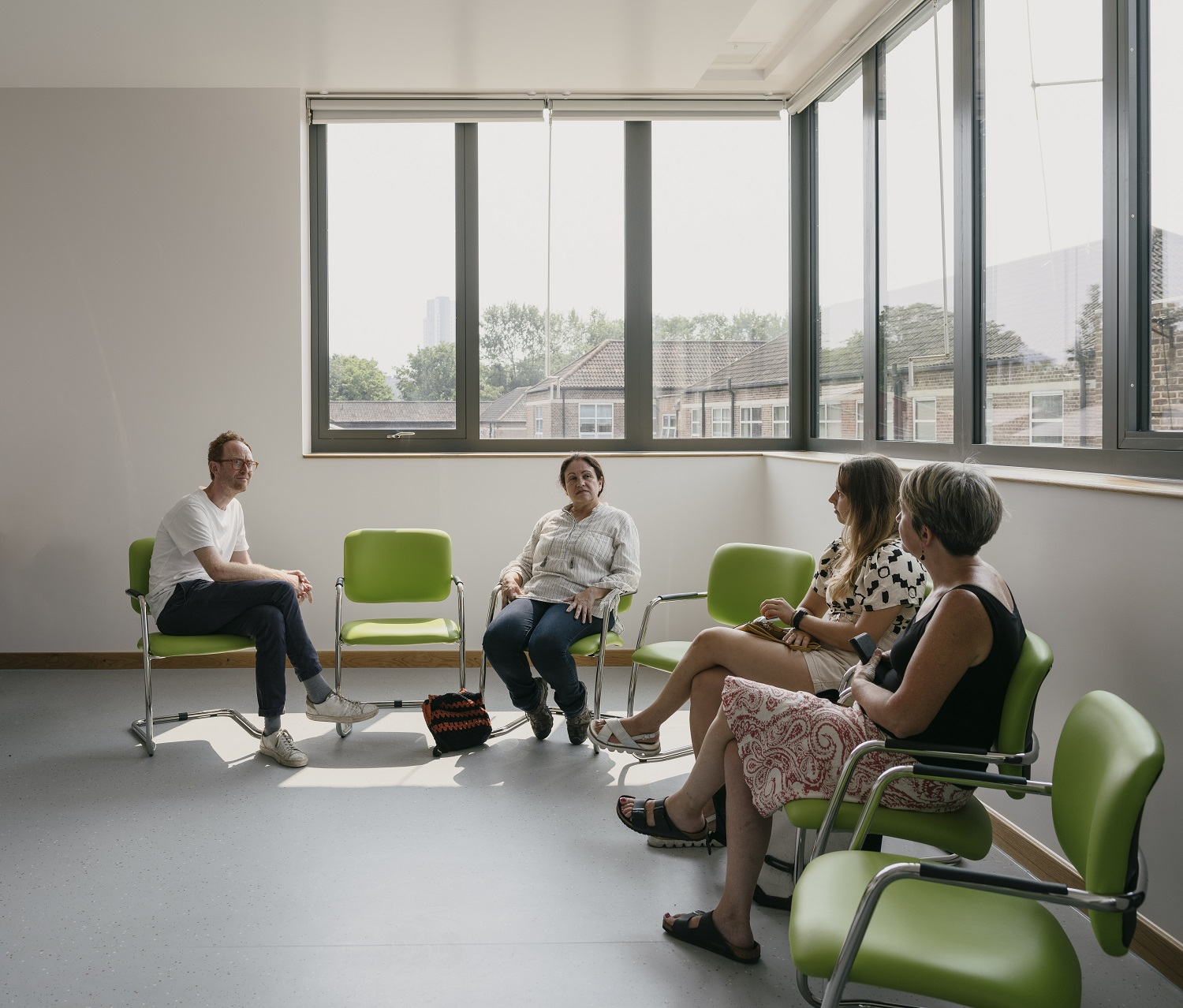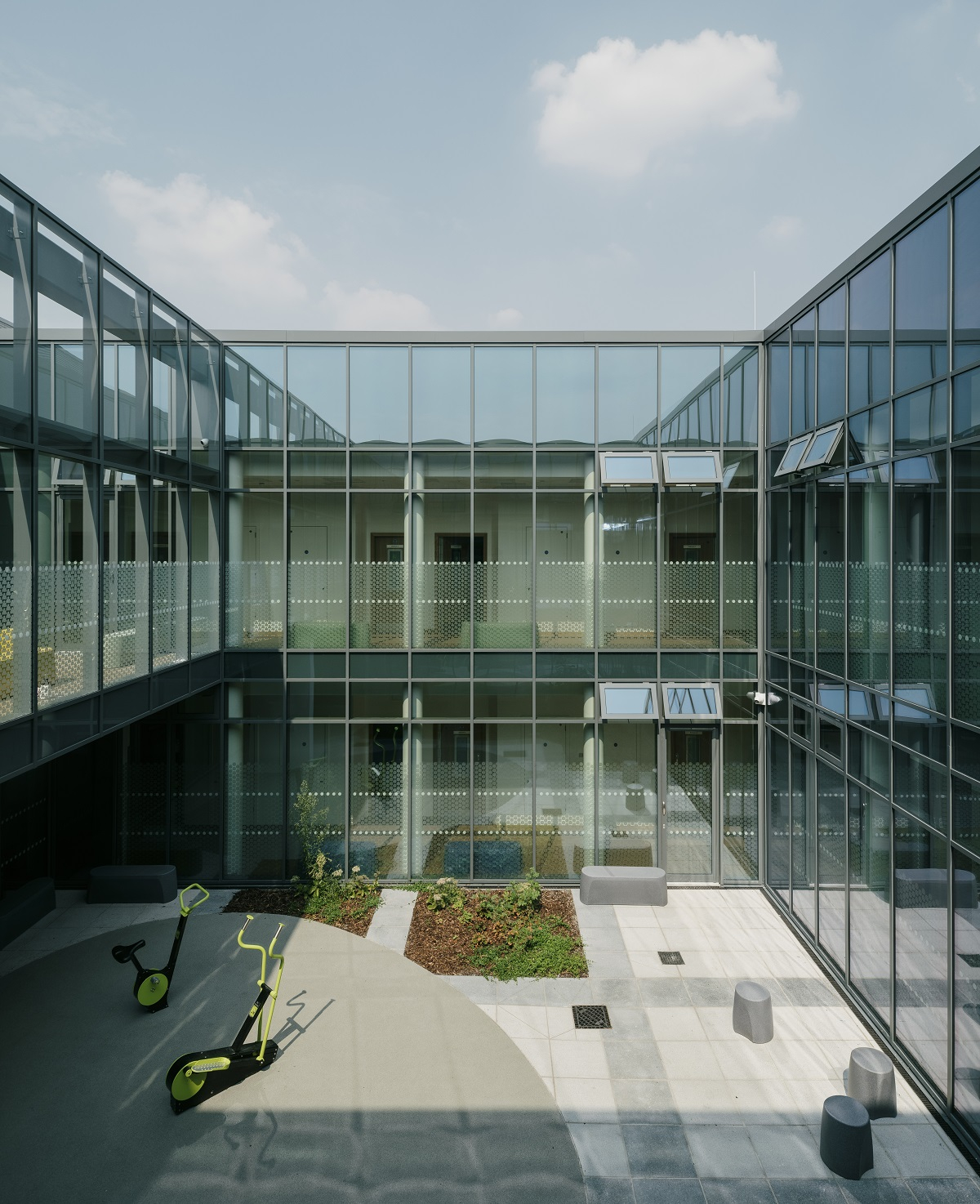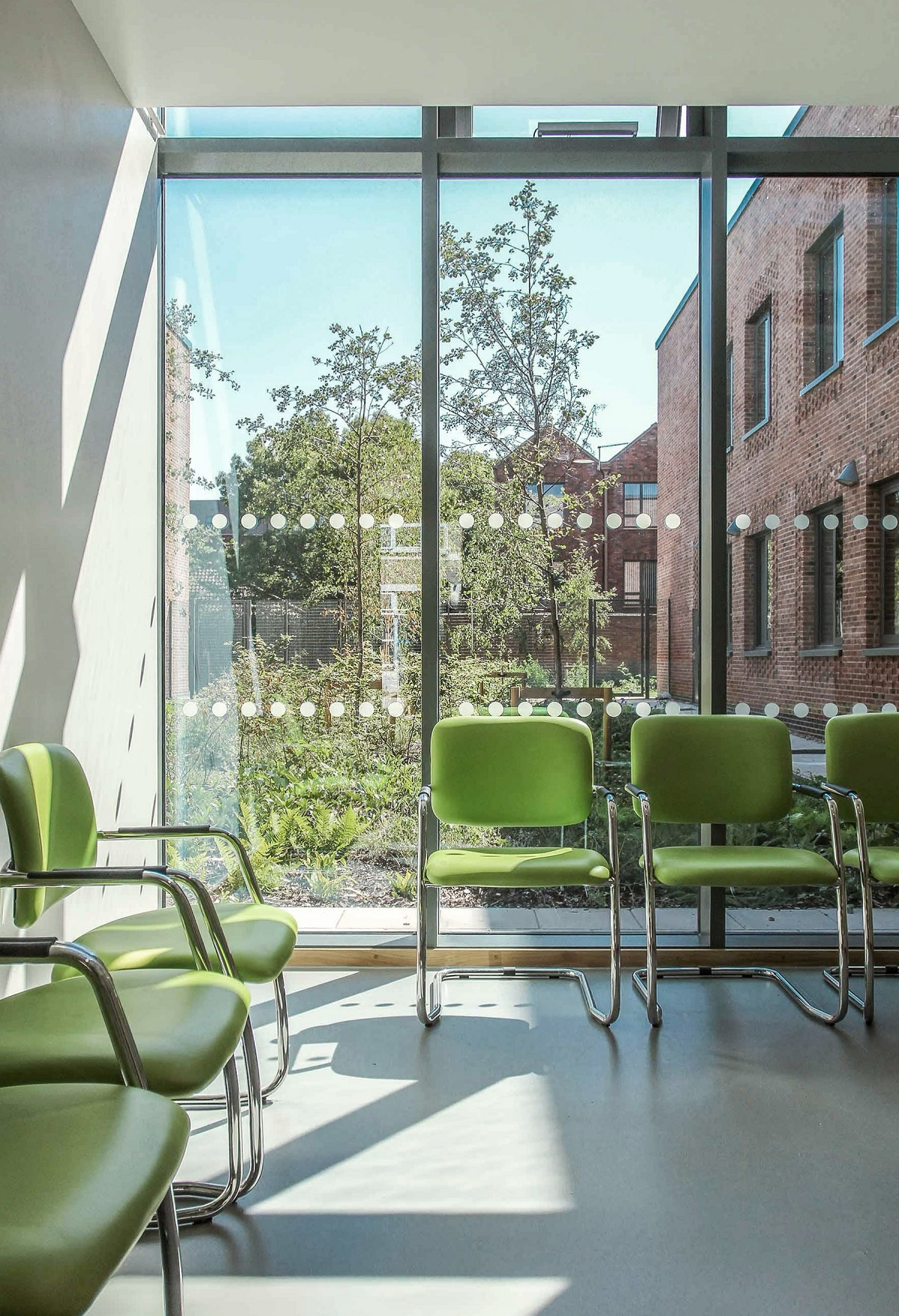
Blossom Court at St Ann's Hospital in London provides a more-therapeutic environment for adult psychiatric care
A new adult mental health inpatient unit has opened in London, highlighting a new approach to the design of psychiatric facilities.
Blossom Court, in the grounds of St Ann’s Hospital, prioritises independent access to outdoor space for patients in order to promote their mental and physical wellbeing and reduce pressure on medical staff.
Designed by Medical Architecture for Barnet Enfield and Haringey Mental Health Trust, the building comprises three adult acute wards and an eating disorders ward, with shared accommodation including a visiting space, staff rest area, and a multi-faith room.
The building is part of wider development of the hospital site to create a people-focused healthcare campus, masterplanned by Medical Architecture.
Ruairi Reeves, director at Medical Architecture, said: “Over time, St Ann’s Hospital has seen multiple phases of rationalisation to make it more effective and efficient.
“At the time of project inception, over half of its buildings lay vacant and maintaining this surplus estate was diverting vital spending away from the provision of healthcare.
“Around the same time, Care Quality Commission reports identified that the trust’s existing inpatient facilities, which dated back to the 1930s, were no longer fit for purpose.
“The therapeutic environment was no longer appropriate for modern mental healthcare, and this impacted on the patient experience and staff satisfaction.
“Following extensive consultation, the trust concluded that the surplus land would be allocated for residential development to fund the required healthcare improvements.”

The campus masterplan for the site prioritises people, with roads and parking organised around the perimeter.
Buildings are planned along a generous boulevard where activities can safely spill out from individual buildings, creating an activated street scene.
To create a physical connection with the existing community, the original perimeter wall was partly demolished; providing a new opening that connects the boulevard with the local network of streets.
And the new inpatient building is prominently located, promoting the hospital’s mental health services and challenging any stigma that surrounds them.
The building was designed to address the complex needs of a mental health ward with a simple solution and an integrated approach.
The four wards are arranged around two private two-storey courtyards, each with a ward on its ground and first floor.
The courtyard arrangement offers private views, abundant daylight and a positive focal point for its patients.
The ward plan forms a simple loop, providing two choices of route.
This gives staff or patients the opportunity to back away from escalating and challenging situations and also enables subdivision for separating patient groups and the creation of one-way circulation routes to aid social distancing.
Providing easy access to good quality outdoor space is one of the building’s fundamental design principles, a move which has taken on heightened importance during the COVID-19 pandemic.
And both storeys are configured to provide direct access to outdoor space without the need for direct staff supervision, something which was severely lacking in the previous facilities.
This autonomy reduces pressure on staff, removing a potential source of conflict and frustration.
The generous ground-floor courtyard features a deep overhang in front of its dining and activity rooms for shade and shelter. On the first floor this creates a terrace bordered by glazing. And visual connection to the larger courtyard space beyond enhances the impression of a spacious outdoor retreat.
To support physical health, inclusive exercise equipment is provided in the courtyards and gardens that are directly accessible on both levels.
The layout of the courtyard also allows an abundance of daylight to enter into the heart of the building, creating the opportunity to connect with the time of day, the seasons and the changing weather.
And the interiors have been designed to create calm, organic environments, with natural oak finishes creating a visual connection to the outside space.
The two-storey building integrates with the adjoining residential development, adopting an architectural language that will complement high-quality housing. This is balanced with the need to ensure appropriate levels of security, privacy, safety and environmental quality.
The facade features a simple palette of high-quality brickwork that will age well, is robust, and integrates with the materials of neighbouring buildings.
And large Britplas Safevent windows—some of the largest the supplier has ever installed, at 2.1m high—address ligature risk and can be opened wide to reveal a fine perforated steel mesh.
This allows good ventilation while preventing the passing of contraband.
And a brick relief pattern around the window emphasises their size, the pattern handed to create a sense of play along the elevation.
To maximise its longevity and sustainability, the building has been designed to be as flexible and adaptable as possible for future use.
Each ward is designed to a standard template, and the stacked wards efficiently share risers. Space standardisation allows services to swap or adapt in the future.
The building is also designed with passive measures, favouring low-energy and low-tech solutions to control the internal environment. These include tall ceilings, window vents at a high level, and exposing the building’s thermal mass to reduce overheating in the summer, along with a high level of insulation to the envelope to retain heat in the winter.
This is supplemented by air source heat pumps and a roof covered with photovoltaic cells to provide a renewable source of energy.
The building is designed to achieve a BREEAM ‘Excellent’ sustainability rating.
Reeves said: “Blossom Court provides a therapeutic, calm environment for patients and staff with good daylight, private views and access to outdoor space.
“It creates a building that everyone can be proud of, while helping to reduce the stigma of mental health and promoting integration with the local community.”
Jinjer Kandola, chief executive and consultant clinical psychologist at Barnet, Enfield and Haringey Mental Health NHS Trust, adds: “Blossom Court sets the bar high – this is how all mental health care should look and we are committed to improving the rest of our estate over the coming years, so all our patients can enjoy the quality of environment that Blossom Court now provides.”


